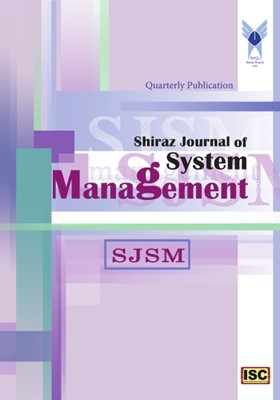-
-
List of Articles
-
Open Access Article
1 - Modified Super Efficiency in Presence of Infeasibility: A Nonradial Approach
Farhad Hosseinzadeh Lotfi G.L. Jahanshahloo Z. Moghaddas M. Vaez-ghasemi -
Open Access Article
2 - Performance Evaluation in Bank Branch with Two-Stage DEA Model
Hilda Saleh M. Rostamy Malkhalifeh -
Open Access Article
3 - Business and Manufacturing Strategies: a Model for Alignment (Case Study: Iranian Automative Industry)
Mehrdad Hoseini shakib -
Open Access Article
4 - Studying the Relationship Between Knowledge Management Effectiveness and Administrative Innovation Among Shiraz Manufacturing Firms
Seyed Masoud Seyedi Nima Shahidi Siroos Hadadnia -
Open Access Article
5 - Supply Chain Risk Assessment Using Analytic Network Processes Case Study: Zagros Petrochemical Company Located in South Pars Economic Zone
Andisheh Honarvar Mohammad Ali Soukhakian Ali Honarvar -
Open Access Article
6 - Identification and Evaluation of the Risks of Information and Communication Technology Projects
Maryam Teimoorirad Ali Reza Azizi -
Open Access Article
7 - The Effect of Enterprise Resource Planning (ERP) on the Control Activities, Case Study: Steel Company
Hashem Valipour Mohammad Hossein Fatheh
-
The rights to this website are owned by the Raimag Press Management System.
Copyright © 2021-2025







